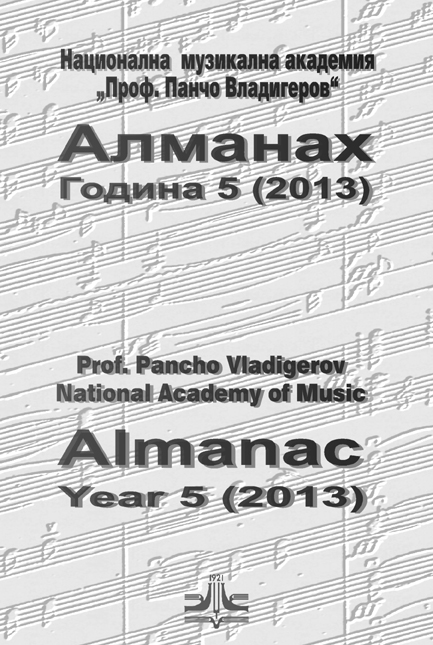Скрито многогласие
Hidden Polyphony
Author(s): Velislav ZaimovSubject(s): Fine Arts / Performing Arts, Music
Published by: Издателство НМА „Проф. Панчо Владигеров”
Keywords: implied polyphony; musical texture
Summary/Abstract: Hidden polyphony is used in works composed for monophonic instruments with limited polyphonic possibilities (bowed string instruments) as well as for polyphonic instruments (guitar, lute, harp, harpsichord, piano, organ, celesta, xylophone, marimba, glockenspiel, vibraphone) and even for small ensembles, when texture exceeds instruments’ technical possibilities required for “real” polyphony. Hidden polyphony can be divided to two main types: 1. when one voice through jumping motion gives the impression of two and sometimes more melodic lines and 2. When one voice through jumping motion gives the impression of two layers. In other words, in the first case, the voice jumps from one to another voice and in the second – from one to another layer. This method is one and the same, but according to the rhythm, the “illusory” lines give the impression of homophonic singing (three-part, four-part) or a texture of contrasting layers.
Journal: Алманах - Национална музикална академия „Проф. Панчо Владигеров“
- Issue Year: 2014
- Issue No: 5
- Page Range: 65-71
- Page Count: 7
- Language: Bulgarian

